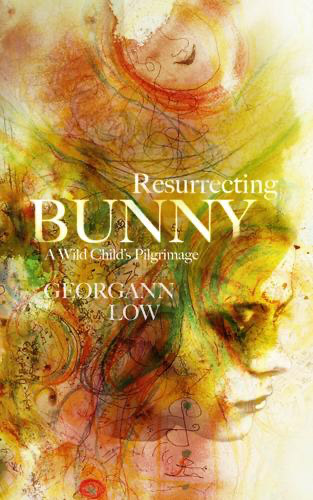“Resurrecting Bunny: A Wild Child’s Pilgrimage’
By Georgann Low
(2021, 92 pp.)
“I wait for another spring,” writes this seasoned artist, jazz musician and Colorado native. “But now is a time for wondering, being soft in my breath and asking for grace.”
Transformation is what Georgann Low explores in this “little book” that packs a big message: “We are constantly changing. And those who think they’re not might just be stuck. Or might not be paying attention.”
Low has been paying attention — since her childhood in the foothills of Colorado, when her grandmother nicknamed her Bunny. She describes in her memoir an idyllic time growing up, a world “sunny and smiling and mostly pleasant,” first shaken by the assassination of John F. Kennedy, then shattered by the murders of Robert F. Kennedy and Martin Luther King Jr. She resolved to embrace the change in the air. Her stint at a liberal arts college north of New York City segued into diverse new friendships, hanging out with musicians at The Village Vanguard. Then a move to Hollywood, reading for acting parts and joining the psychedelic drug culture.
“After the murders [of RFK and MLK] and witnessing the Vietnam War carrying off our mates, we collectively hurled ourselves over the precipice and found we could fly. For a moment the world changed,” Low writes of her generation.
Heady, explosive, transformative time — it took a deleterious toll on many people, including the author. She changed her name to Sybil, and she grew quiet, she writes, a watchful prophetess stunned by the cacophony of argumentative voices around her and living increasingly inside her head. Drugs made her paranoid, and her strange behavior alarmed her family.
Low describes herself at the time: “I felt I’d been thrown off the merry-go-round of my childhood into a psychedelic costume ball, where I was a wallflower who’d forgotten her mask.”
Her spiritual path was tortuous — from a church-going childhood to rejecting the churchy dogma to finding a way back to spirituality via meditation in New Mexico. By her late 20s she was growing tired of living in a “hippie house full of lost youth,” and thought she might as well “be dead as living a thoughtless, empty life.” Meditating required discipline, she found, and proved way harder than giving up drugs.
She once wrote in a journal: “I like trees better than Jesus.” Maybe because trees are Jesus, she writes, “in their selfless giving to people despite what we do to destroy them.” She was initiated into Transcendental Meditation, then studied with various teachers like Chögyam Trungpa Rinpoche at Naropa University, and later Paramahansa Yogananda (“Autobiography of a Yogi”). She practiced yoga. When she began to have children, she recognized a feminine aspect to the divine — “I saw nature as The Mother. As my body opened to new life I heard her whispering in my ear.”
Ultimately, as Low offers in her thoughtful, organically unfolding narrative, she made her way back to the church, but on her own terms. When her children were grown, she bought a farmhouse in southern France, where she spends part of the year, and met a Denver couple who spoke glowingly of St. John’s Cathedral there. She began to attend. She recognizes that everyone has their own path to the spiritual, and none is right or wrong — a tolerant approach she applies to neighbors with different political views from her own.
“Though I wasn’t a church person I found my own way into the mystery that is God because somewhere deep inside I felt it was important,” Low ponders. “Or it might be better to say that I heard my name called as I stumbled along my way.”
In the thick of a South Dakota snowstorm, as valiant hunting dog Nassau, a Labrador retriever, tries to pursue his prey when his master, the Great One, disappears in the snow, he is surprised to grab a complaining hen pheasant deep in the drifts.
“Let go of me, you wooly black bear!” the indignant bird squawks. “My name’s Chatty, what’s yours? You know if you open your mouth, you can answer me!”
Nassau knows that if he opens his mouth, he will drop the bird, and above all, he is loyal to the Great One and wants to prove his retrieving skills. So he bounds forward to find his master, ignoring the angry pleas of the pheasant.
Thrusting out his chest, sure of being rewarded, Nassau is deflated to see the Great One gently pry the bird from the dog’s mouth and toss it up in the air to take flight.
The Great One explains that this is a hen pheasant: “We don’t shoot the hens. It hurts the pheasant population.” And away they go back go through the snow, as Chatty watches from a safe distance.
Told from the hunting dog’s well-intentioned point of view, Harkey’s latest delightful title in her Travels with the Pack series (“Hickory Doc’s Tales”) is written for elementary-age children and creates empathetic characters in these friendly critters and their human family. Illustrator Minick’s bold drawings will engage readers and keep them peeping their own questions.
Reprinted with permission from The Taos News


Recent Comments